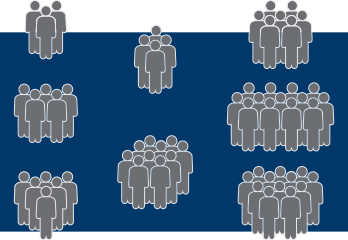
Andy Dune / shutterstock.com
Arthritis is often associated with retirees, but a new analysis of government data suggests the disease is much more common in young and middle-aged adults than previously believed.
Disease prevalence is currently estimated at about 54 million adults, but that number is greatly underestimated, especially among those 64 and younger, according to a study that reevaluates how the government tallies arthritis cases. Findings from researchers who analyzed national surveillance data appeared recently in the journal Arthritis & Rheumatology.1 “We aimed to estimate arthritis prevalence based on [an] expansive surveillance definition that … also adjusted for the measurement errors in the current definition,” write the authors.
The current estimates for the economic burden of arthritis reported by the Centers for Disease Control and Prevention (CDC) are based on uncorrected, under-reported cases of arthritis, says lead author S. Reza Jafarzadeh, DVM, MPVM, PhD, an assistant professor in the Clinical Epidemiology Research and Training Unit at Boston University School of Medicine in Massachusetts. The estimates needed revision to accurately reflect the country’s true arthritis burden, he says.
The CDC’s national estimate was derived from a single question in the 2015 National Health Interview Survey (NHIS) that asked participants if they have doctor-diagnosed arthritis. The researchers note that other information in the survey about joint symptoms wasn’t considered in determining prevalence even though some people with only joint symptoms have been found to have arthritis.
In pointing out a need for better accuracy, study authors refer to a 2005 validation study of the NHIS surveillance data that verified clinical cases of arthritis and documented diagnostic sensitivity and specificity of the arthritis-related survey questions.2 That study determined the sensitivity of the surveillance definition measured 53% in people ages 45–64 and 69% in those 65 or older, a signal that large portions of people with arthritis in both groups were left uncounted.

Dr. Jafarzadeh
“Such a low sensitivity, especially in a younger population, where almost half of true arthritis cases are missed, results in substantial misclassification and underestimation of prevalence, and would have a detrimental effect for planning and needs assessment,” the authors write. “Since 2002, national estimates for the prevalence of arthritis or of doctor-diagnosed arthritis that relied on the assurance of the validation study have produced an uncorrected estimate of 54.4 million adults (22.7%) in the United States in 2015,” the article continues. “No figures have been released that correct these estimates for the measurement errors caused by the imperfect sensitivity.”
